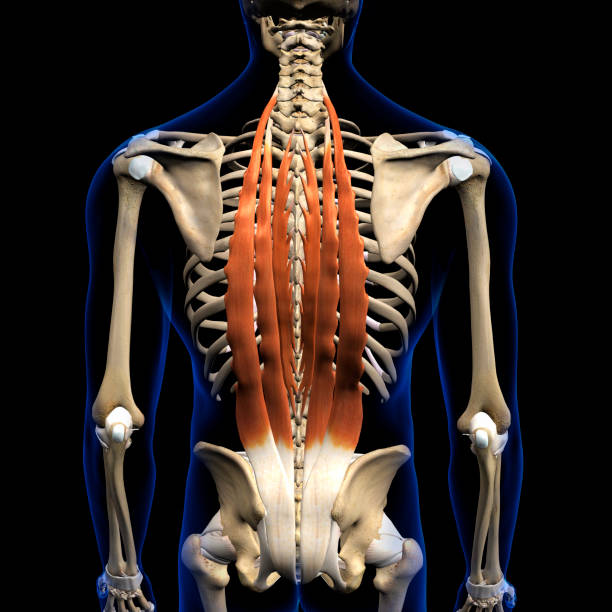Full Anatomy of the Paraspinal Muscles
The Paraspinal muscles also known as the erector spinae are a group of muscles that run along the length of the spine. It consists of three main parts: the iliocostalis, longissimus, and spinalis. These muscles have various attachments along the vertebrae, sacrum, iliac crest, and ribs, covering the entire length of the spine. They are vital to the function, movement, and overall well-being of the spine. Being that the spine is an extremely important body part, we must understand exactly how these muscles function and how to efficiently train them to keep the spine mobile and strong.
Function
The erector spinae muscles play a crucial role in maintaining the upright posture and extending the spine. They are active during movements like standing, walking, and lifting. Additionally, these muscles assist in controlling flexion of the spine and provide stability during rotational movements. Any movement related to balancing and bending the spine is made capable thanks to these muscles.
Relation to other back muscles
The erector spinae works in coordination with other back muscles to support the spine and facilitate various movements. It interacts with the deep muscles of the back, such as the multifidus, to provide segmental stability to the vertebrae. Additionally, the paraspinal muscles collaborate with muscles like the latissimus dorsi and rhomboids to maintain proper posture and spinal alignment. So now that we understand how the paraspinal works, why is it important and how can we use this to our advantage?
Importance of Paraspinal Muscles
- Importance:
- Spinal Support: The paraspinal muscles, located along the spine, provide essential support to the vertebral column. They play a key role in maintaining the structural integrity of the spine and preventing excessive flexion, extension, or lateral movements.
- Postural Control: These muscles contribute significantly to postural control and alignment. A well-developed and properly functioning paraspinal musculature helps individuals maintain an upright posture, reducing the risk of postural deviations and associated issues.
- Spinal Stability: The paraspinal muscles, including the erector spinae, multifidus, and others, work together to offer dynamic stability to the spine. This stability is crucial for everyday movements, as well as during more intense physical activities.
- Necessity for Athletic Performance:
- Power Transfer: Efficient power transfer begins with a stable spine. Strong paraspinal muscles facilitate force transmission through the core, allowing athletes to generate power from their lower body and transfer it effectively to the upper body during activities like lifting, throwing, or swinging.
- Balance and Coordination: Proper functioning of the paraspinal muscles contributes to overall balance and coordination. Athletes often require precise control of their body movements, and a stable spine is fundamental for executing movements with accuracy and efficiency.
- Injury Prevention: Strong and well-conditioned paraspinal muscles play a crucial role in injury prevention, especially in sports that involve dynamic and multidirectional movements. These muscles contribute to spinal stability, reducing the risk of strains, sprains, and other spine-related injuries.
- Optimal Biomechanics: The paraspinal muscles are integral for maintaining optimal biomechanics during athletic activities. Whether it’s running, jumping, or performing complex movements, a stable spine ensures that the body can move efficiently and with reduced mechanical stress on the musculoskeletal system.


